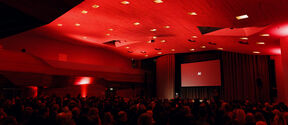Energy saved significantly - the community's actions have produced results in Aalto

Aalto University has reached the energy efficiency goal of its facilities ahead of schedule. In the period 2017-2025, the goal according to the Energy efficiency agreements (TETS) for the university's facilities has been to increase the energy consumption efficiency of the facilities by 10.5 percent compared to the consumption in 2015 by 2025. The goal was already achieved at the end of 2022.
The most significant actions to achieve the goal have been the Metro Block's energy efficient solutions and better than standard construction, renewable energy systems in Dipoli (geothermal heat) and the Metro Block (geothermal heat and solar electricity), energy efficiency improvements of ventilation machines, and LED lighting projects.
Aalto University has also been involved in national Energy efficiency agreements for business facilities in the previous period 2011-2016. At that time, the efficiency target was 6 percent in relation to 2010 consumption.
The Energy efficiency agreements for business facilities is a national system involving 700 companies and more than 130 municipalities. "TETS" is a part of the voluntary energy efficiency agreements covering the whole of Finland, which aims to achieve the energy saving goals set for Finland. With the voluntary nature, Finland has the opportunity to avoid national legislation deviating from international development or other coercive measures that could, for example, weaken the competitiveness of companies.

The university strongly adheres to its energy saving goal
In terms of the university's overall energy saving goals, Aalto is on its way to the ambitious goal of 15 percent savings over 12 months (October 2022-September 2023). By the end of April, the Aalto community has saved more than 9 percent of energy.
The energy saving measures of the entire community have had a big impact on the results. If you still spot energy guzzlers on campus, let us know about them!
- Updated:
- Published: This content was originally published on www.aalto.fi.
Read more news

Aalto Alumni Weekend – a versatile event for 1,400 participants at Dipoli
Aalto University’s largest alumni event, Aalto Alumni Weekend, brought together alumni from all three of the university’s fields in October 2025 at Dipoli on the Aalto University campus.
Temporary traffic arrangements on Lämpömiehenkuja and Metallimiehenkuja
The new arrangements will be implemented starting Monday, November 24, 2025.
Accessible routes in Aalto Space application
You can also choose an accessible route for navigation on campus.